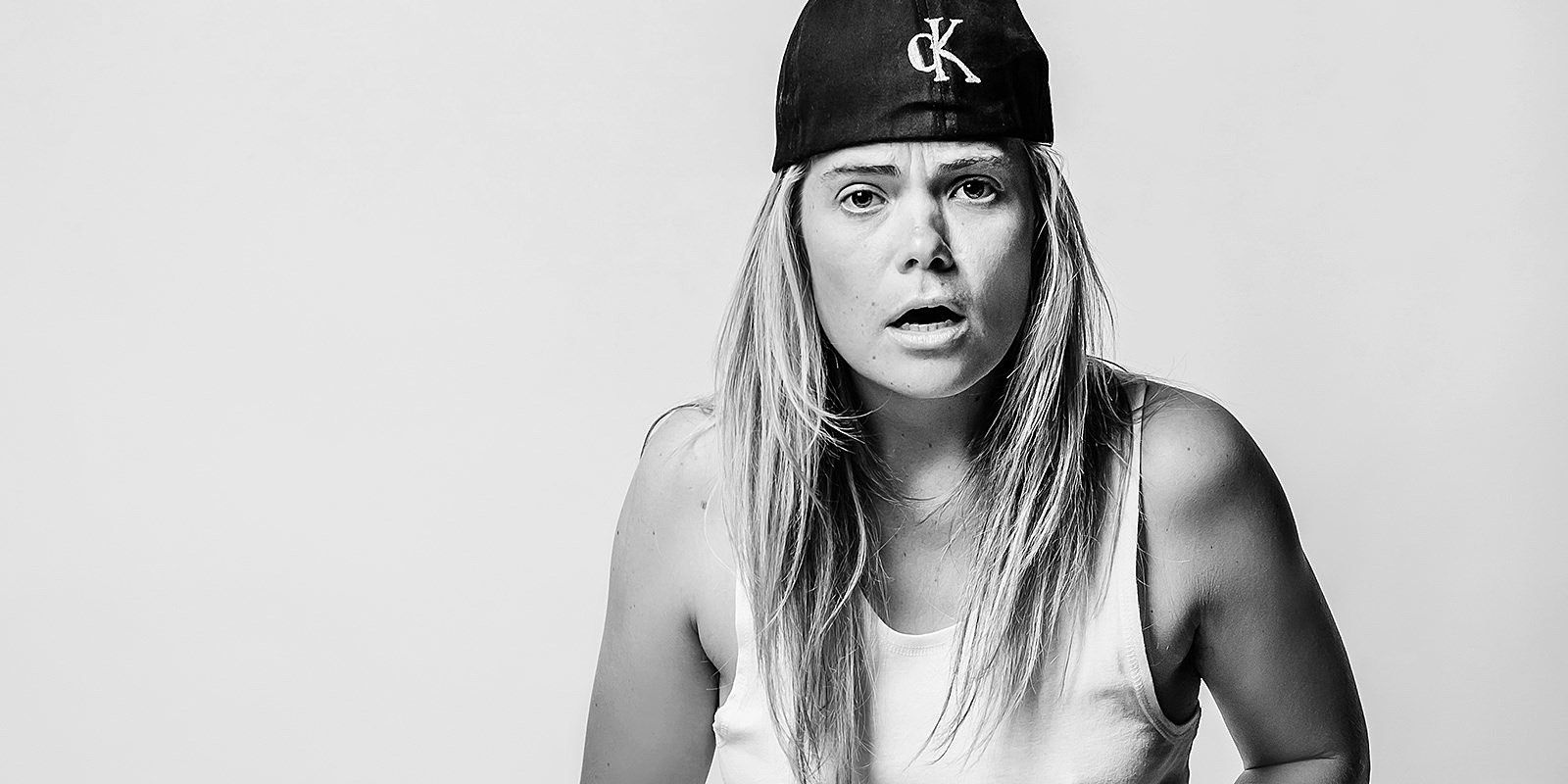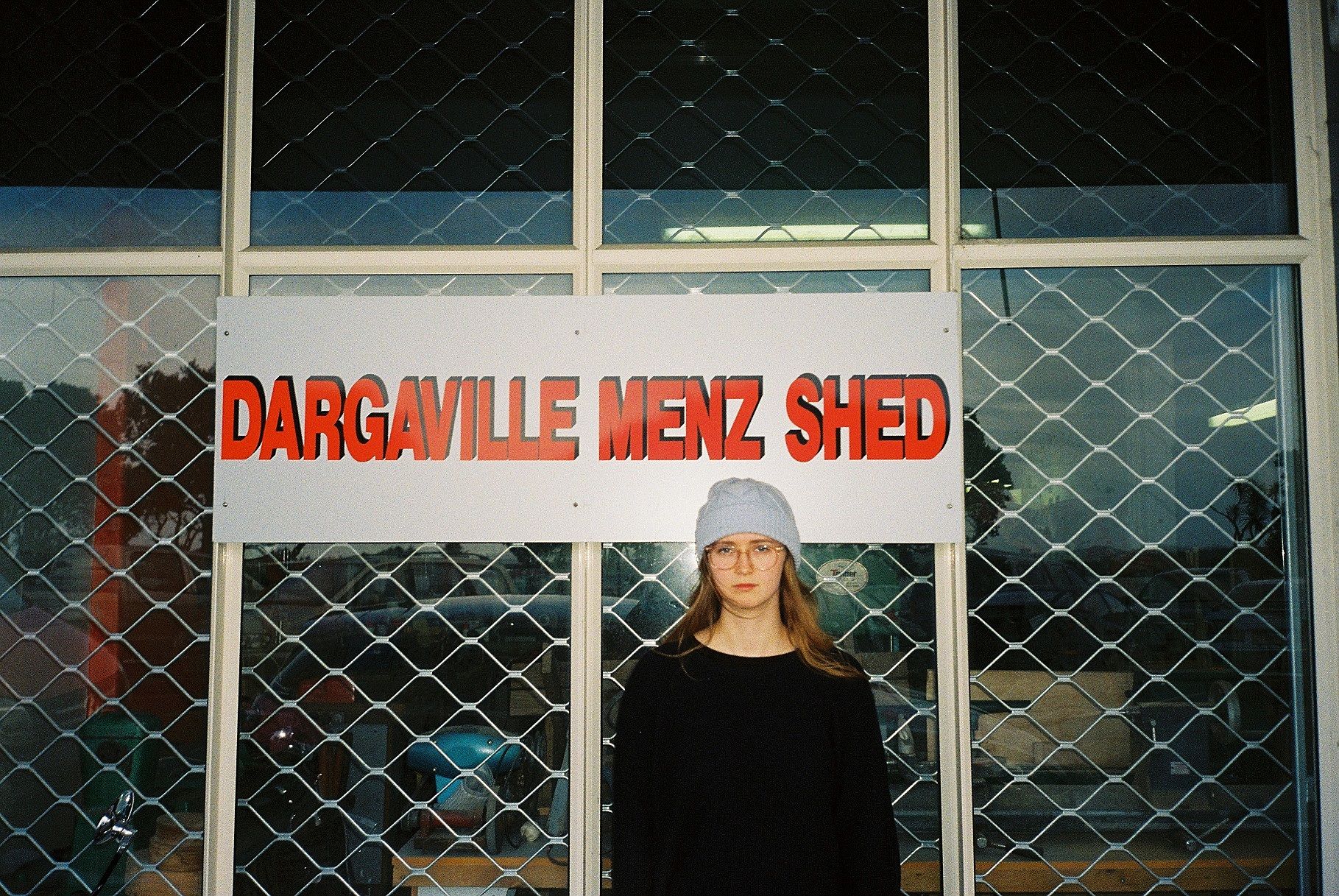Blurring the Line: A Review of I Wanna Be Mark Wahlberg
Can we be masculine, feminine and neither, all at once? I Wanna Be Mark Wahlberg by Melody Rachel is a performative exploration of the body. Waveney Russ reviews.
Navigating society’s prescribed gender binary is inescapably turbulent. Throw in a conservative Christian upbringing, lack of respect for dichotomies and a vehement admiration of Mark Wahlberg’s aggressive masculinity, and you find yourself within Melody Rachel’s solo performance, I Wanna Be Mark Wahlberg. Created and performed with mentorship from Julia Croft (as part of Basement Theatre’s Ideas in Residence 2020 programme), I Wanna Be Mark Wahlberg is defined by Rachel’s propensity for interpretive dance and physical comedy. Nestled in the Basement’s dimly lit studio space, the performance is split into several distinct epochs.
The chronology begins at Rachel's adolescence. Dressed in black denim shorts, shirt and a leather belt, Rachel immediately captures the aesthetic of someone who has already started to experiment with blurring the line between masculinity and femininity. The performance, void of dialogue, opens with Rachel miming recognisable actions from superhero movies. Young boys are socialised to synthesise these actions into play and communication with others. In superhero movies, the hero is often white, cis, straight and ripped. He destroys public property, is an affront to God with his superhuman powers and gets the girl as the city he's destroyed in the name of self-defence crumbles around him.
Glowing red and yellow from the stage lighting above, Rachel acts out these infamous battle scenes. Darting from corner to corner, pulled by imaginary webs, they channel Spiderman. Sound effects mimic blowing up walls with the audacity of Ironman. Rachel's mouth contorts into an 'o' of wonder. They signal for an audience member to place their hand beside theirs and blow up a wall together. There is comfort in the naivety of their youth, which feels authentic when witnessing Rachel's interactions and subsequent discoveries with the audience. Male heroes become the touchstone of gendered personal development throughout the performance.
In transitioning to their second epoch, Rachel exits the stage through a door and swings it shut. What follows is a comedic display of them trying, unsuccessfully, to re-enter through the same door. Unfortunately, with audience members sitting on three sides of the stage, the subtleties in this transition, such as Rachel's fingers wiggling beneath the doorframe, are lost to those seated at an angle that renders the door out of sight. This disadvantaged perspective also affects the visual experience when shadows are projected onto the back wall. Still, it never hinders the narrative to the point of audience disengagement.
In superhero movies, the hero is often white, cis, straight and ripped
Thanks to an audience member opening the door for Rachel, and their successful re-entry onto the stage (sometimes you need a little support on life's more challenging journeys), this second epoch is defined by a revelation of self. Rachel peels off their shirt and slides down their shorts. Dressed in a bra and rip-off Calvin Klein boxer briefs (a homage to Mark Wahlberg’s CK campaign circa 1992), they start dancing in front of a spotlight to an electronic soundscape, their shadow cast on the back wall. It's a sonorous, rhythmic encounter with Rachel visually magnifying the space their body occupies. They wear ballet shoes and perform delicate arabesques, before descending into breakdancing, writhing around on the floor. They smack their hands on their belly to the beat. This epoch questions the imbalance of power between boys and girls that many first become conscious of in their teenage years. If I'm female, Rachel asks, must my feminine power lie in objectifying my body by twerking to ‘Get Sexy’ by the Sugababes? If I'm male, is my masculine power best recognised by aggressive posturing to ‘Lose Yourself’ by Eminem? What if I'm neither?
The Mark Wahlberg motif, to which there is no direct reference until the second epoch, is made explicit in a scene where Rachel enters stage left, wearing dark shades and holding a can of Coke. It is surprising this appearance comes so late. Through the speakers, a piece of archival audio plays. Mark Wahlberg describes a particularly exciting photoshoot in California in the 90s. ‘Levels’ by Nick Jonas, a teenage pinup of the 2000s, kicks in as Wahlberg trails off, and Rachel starts to strike poses to the beat. These poses are overtly masculine, parodying a sex symbol's slack-jawed nonchalance when looking down the barrel of a camera. It is reminiscent of amateur photoshoots conducted in adolescence. When asked to 'strike a pose', young girls are expected (and expect of one another) to appear sultry, serene, in control. When faced with the same imperative, Rachel spreads their legs, drops their hand in a pocket and leaves their bottom jaw swaying. The Wahlberg motif is a direct contradiction to the socialisation of young girls. In a feat of strength, Rachel crushes the empty Coke can in their hand and tosses it to the floor. Gender binaries create social discrimination from youth as the societal expectations of what those two distinct genders represent begin to materialise. The premise of I Wanna Be Mark Wahlberg, Rachel points out, is that they can be masculine, feminine and neither, all at once.
A parody of performing gender while locked in a binary
For many, interpretive dance can be a difficult medium to comprehend, let alone appreciate. Rachel leads us into the third epoch, the period closest to their current self, with a scene that crystallises the purpose behind their performance. Now on their third costume change, dressed in a tight white singlet and black Converse shoes, they pick up an aux cord connected to a long cable in the centre of the stage. They press the aux connection to their arm, and it emits the low, whining sound of static. They push the connection to their leg – a loud, sharp static sound. Repeating the action several times with the same result, Rachel finally presses the cable to their temple. A recording of Rachel recounting a conversation they had with a family member, who said they could “chop my tits off and turn me into a real boy. I can grow a penis and turn into a real boy”, is played over the sound system. This one piece of original script loops each time the cable is pressed to their head and cuts off as soon it loses contact. Gender dysphoric in its nature, Rachel's internal monologue acts as a verbal anchor for those seeking an experience that sounds like their own. Though discomfort is present in this monologue, Rachel never turns fatalistic. Their blend of dance routines, mimes and shadow play inherently values curiosity about oneself. Rachel plugs an iPod Shuffle into the aux, and dances to the end of the epoch. They arrive in the present day, riding out gendered internal conflict as uncompromisingly as, say, Mark Wahlberg portraying Charlie Croker in The Italian Job.
When looking at That Photoof Mark Wahlberg, I see performative athleticism. I see the ownership of sex symbolism, and the expectation of being a new-era pinup idolised on young girls' bedroom walls. I also see a rebellious charisma, a kind of danger. In I Wanna Be Mark Wahlberg, Melody Rachel displays natural athleticism through plyometric, energy-fuelled dance routines. They assert the depreciation of the 90s sex symbol, the ridiculous system by which a 2D set of abs sells a persona, an attitude and a can of Coke. Rachel is a rebellious, charismatic, dangerous leader. They unapologetically form an identity outside of society's expectations through rigorous emotional labour and internal reflection. I Wanna Be Mark Wahlberg makes a parody of performing gender while locked in a binary. It explores the value of remaining curious about what your body – free of gendered labels – can achieve through self-exploration.
Basement Theatre's I Wanna Be Mark Wahlberg
9 February - 13 February
Basement Studio

